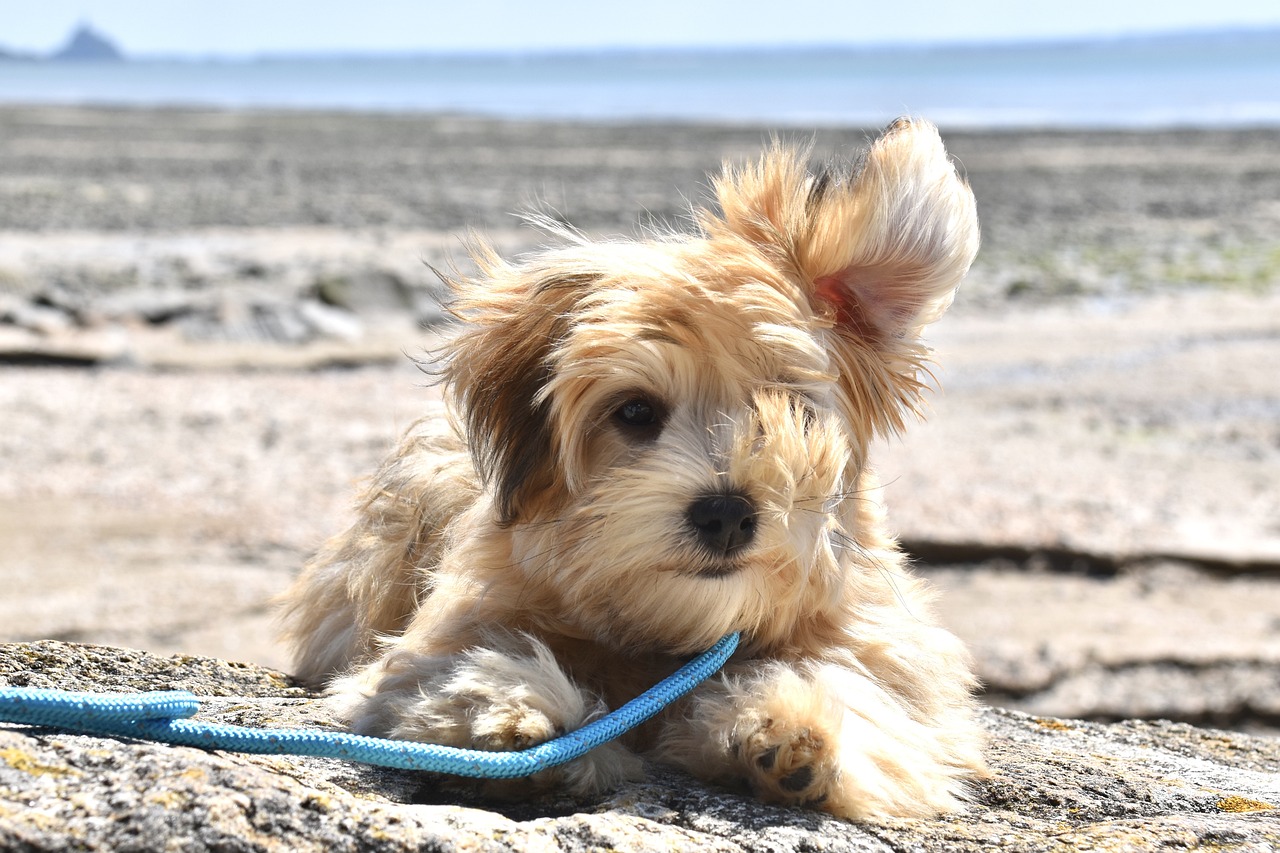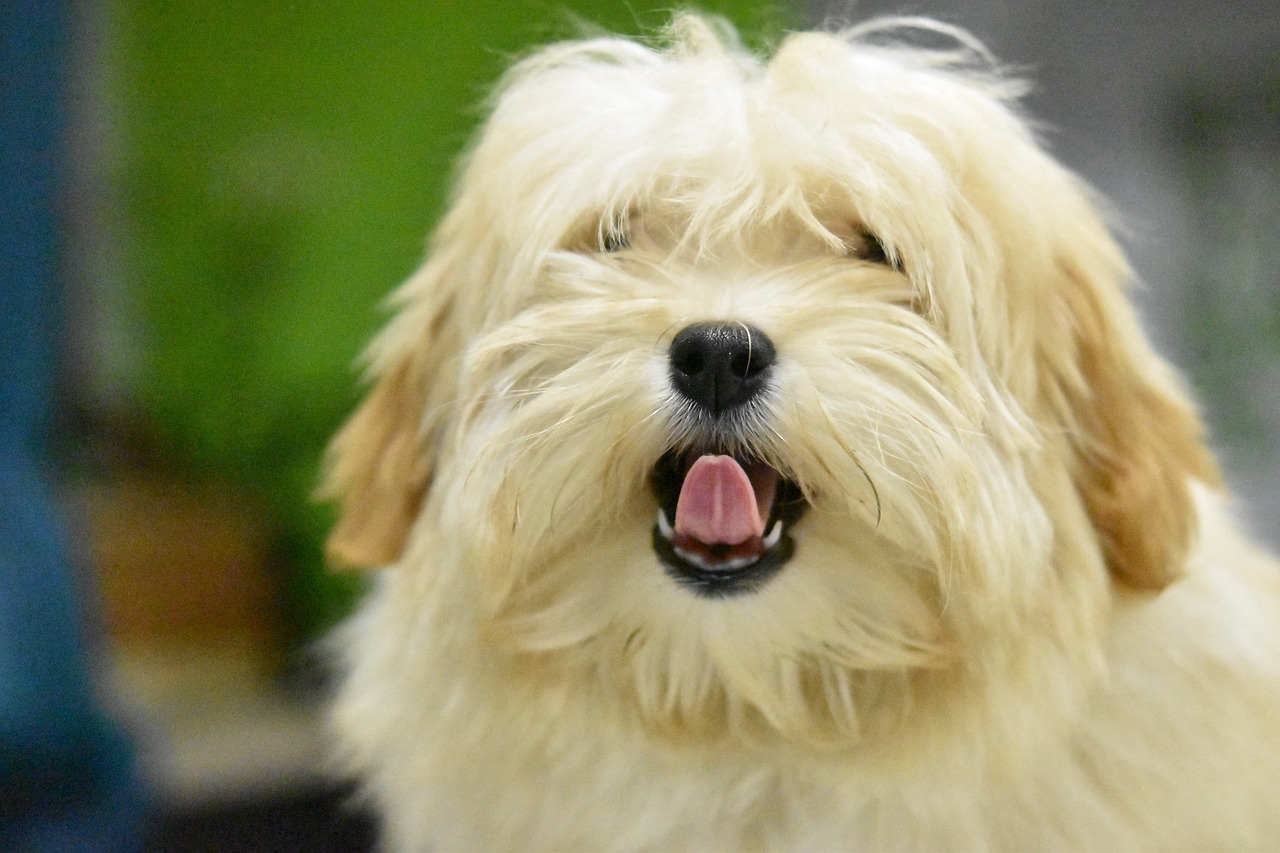The Havanese, with its flowing silk coat and expressive eyes, is not just Cuba’s national dog but a breed that embodies joy and companionship. Known for their affectionate nature and intelligence, Havanese dogs have a history as rich and colorful as the streets of Havana itself. Tracing their lineage back to the Bichon family of dogs, which includes breeds like the Bichon Frise and Maltese, the Havanese developed in Cuba after Spanish settlers brought their small dog companions to the island. Over centuries, these dogs adapted to the tropical climate, evolving into the unique breed we know today. The Havanese’s journey from being the cherished pets of Cuban aristocracy to becoming beloved companions worldwide is a testament to their enduring charm and adaptability. This article aims to delve into the deep history and origins of the Havanese, exploring the breed’s development, cultural significance, and the characteristics that make it a favored pet among dog lovers around the globe.

The Ancestral Origins of the Havanese
The Havanese breed’s origins can be traced back to the Bichon-type dogs that were brought to Cuba by Spanish settlers in the early 16th century. These small, companionable dogs were likely crossbred with the island’s existing dog population, gradually giving rise to a distinct breed suited to the climate and culture of Cuba. Over time, the Havanese became a symbol of wealth and status among the Cuban elite, prized for their beauty, intelligence, and companionable nature. The breed’s development was isolated from European influence for centuries, allowing for the emergence of distinct characteristics that define the Havanese today.
Development and Recognition
The 19th century marked the height of the Havanese’s popularity in Cuba, with the breed gaining recognition beyond the island’s shores. European travelers and traders were charmed by the Havanese, leading to their introduction to Europe, where they were admired for their exotic origins and delightful temperament. However, the Cuban Revolution in the 20th century put the breed at risk of extinction, with many of the Cuban upper class fleeing the country. A handful of Havanese dogs were brought to the United States by Cuban refugees, where dedicated breeders worked to revive and preserve the breed. The Havanese was officially recognized by the American Kennel Club (AKC) in 1996, a significant milestone that helped secure the breed’s future.
The Breed in Modern Times
Today, the Havanese enjoys popularity worldwide, cherished for its adaptable and cheerful disposition. The breed’s small size and moderate exercise needs make it an ideal companion for families, seniors, and city dwellers alike. Havanese dogs are also celebrated in the show ring for their distinctive gait and luxurious coats, which come in a variety of colors and patterns. Beyond their physical attributes, Havanese dogs are valued for their intelligence and trainability, excelling in obedience, and agility, and as therapy dogs, spreading joy wherever they go.
Characteristics and Temperament
The Havanese is a small but sturdy dog, with a distinctive long, silky coat that can range from straight to wavy. The breed is known for its expressive eyes and friendly, outgoing nature. Havanese dogs are highly sociable and thrive on interaction with their human companions, displaying a playful and affectionate demeanor. They are also remarkably intelligent, making them easy to train and eager to please. Despite their jovial nature, Havanese dogs can be alert watchdogs, signaling the approach of strangers with a bark, though they are more inclined to greet friends than guard against foes.
The Havanese breed’s journey from the lap of Cuban luxury to homes around the world is a story of survival, adaptability, and enduring appeal. These charming dogs have captured the hearts of many with their joyful disposition, intelligence, and unique appearance. The efforts of breeders and enthusiasts to preserve the Havanese heritage have ensured that this delightful breed continues to thrive and enrich the lives of those who welcome them into their homes. As the national dog of Cuba, the Havanese stands as a proud symbol of the island’s history and culture, embodying the spirit of companionship and resilience.
Frequently Asked Questions About The History of Havanese

1. What is the origin of the Havanese breed?
The Havanese breed originated in Cuba and is the country’s national dog. This breed descends from the Bichon family, which includes breeds like the Bichon Frise and the Maltese, brought to Cuba by Spanish settlers and European travelers. Over centuries, these small dogs were selectively bred on the island, adapting to the tropical climate and evolving into the distinct breed known today as the Havanese. The breed’s name is derived from Havana, the capital city of Cuba, where these dogs were particularly popular among the Cuban aristocracy.
2. How did the Havanese get its name?
The Havanese breed got its name from Havana, the vibrant capital city of Cuba, reflecting its deep roots in Cuban history and culture. The name signifies the breed’s long-standing association with the city, where it thrived as a beloved companion of the Cuban elite. The Havanese were once known as “Habeneros,” indicating their origin and enduring connection to Havana.
3. What roles did Havanese historically serve?
Historically, the Havanese served primarily as companion dogs for the Cuban aristocracy and wealthy families. They were cherished for their affectionate nature, intelligence, and ability to provide comfort and companionship. Their small size and amiable temperament made them ideal lap dogs, though they were also valued as alert watchdogs, using their keen sense of hearing to notify their owners of visitors. The Havanese’s role as a companion dog is a testament to its sociable and loving nature.
4. When was the Havanese breed officially recognized?
The Havanese breed was officially recognized by the American Kennel Club (AKC) in 1996. This recognition marked a significant milestone in the breed’s history, highlighting its growing popularity and acceptance outside of Cuba. The AKC’s recognition helped to standardize the breed’s characteristics and promote its presence in dog shows and competitions, contributing to the Havanese’s status as a beloved breed worldwide.
5. What challenges has the Havanese breed faced?
The Havanese breed faced significant challenges, particularly during the Cuban Revolution in the 20th century, when many Cuban families fled the country, taking their Havanese dogs with them. This period posed a risk to the breed’s survival in its native land. Additionally, the breed faced the threat of obscurity before its introduction to the United States and subsequent recognition by the AKC. Dedicated breeding efforts by Cuban exiles and enthusiasts were crucial in preserving the breed and ensuring its continuation.
6. How did the Havanese come to be recognized outside of Cuba?
The Havanese came to be recognized outside of Cuba largely through the efforts of Cuban exiles who fled to the United States and other countries during and after the Cuban Revolution. These individuals brought their Havanese dogs with them, introducing the breed to a wider audience. The breed’s charm and companionable nature quickly gained its admirers, leading to the establishment of breeding programs aimed at preserving and promoting the Havanese outside of its native land.
7. What are the distinctive physical characteristics of the Havanese?
The Havanese is known for its long, silky coat, which comes in a variety of colors and patterns. The breed has a small but sturdy build, with a slightly longer body than height, giving it a distinctive appearance. Havanese dogs feature expressive eyes and a tail that curls over their back. Their coat, which can range from straight to wavy, requires regular grooming to maintain its condition and appearance. These physical traits, combined with their lively gait, contribute to the breed’s charm and elegance.
8. What is the temperament of the Havanese?
The Havanese is celebrated for its affectionate, friendly, and outgoing temperament. These dogs are known for their strong attachment to their families, often following their owners from room to room. Havanese are intelligent, trainable, and eager to please, making them excellent companions and family pets. They are also known for their playful nature and get along well with children and other pets. Despite their small size, Havanese have a confident demeanor and can be quite spirited.
9. Are Havanese good with children and other pets?
Yes, Havanese are generally excellent with children and other pets. Their gentle and playful nature makes them wonderful companions for families. Havanese are tolerant and patient with children, enjoying playtime and cuddles. They also tend to get along well with other dogs and pets in the household, showcasing their sociable and amiable disposition. Early socialization is recommended to ensure positive interactions and to foster a well-rounded temperament.
10. How do Havanese perform in dog sports and activities?
Havanese excel in a variety of dog sports and activities, thanks to their intelligence and eagerness to learn. They are particularly adept at obedience, agility, and rally, where their quick learning ability and desire to please their handlers shine. Havanese also enjoy participating in activities like trick training and therapy work, demonstrating their versatility and adaptability. Their enthusiastic and joyful nature makes them a delight to train and work within various disciplines.
11. What are the grooming requirements for a Havanese?
The grooming requirements for a Havanese are moderate to high, primarily due to their long, silky coat. Regular brushing and combing are necessary to prevent mats and tangles, with many owners opting for professional grooming to maintain the coat’s condition and appearance. Havanese require bathing every few weeks, along with routine care for their ears, nails, and teeth. Some owners choose to keep their Havanese in a shorter “puppy cut” to simplify grooming and maintenance.
12. How long do Havanese typically live?
Havanese typically have a lifespan of 14 to 16 years, making them one of the longer-lived dog breeds. Their longevity can be attributed to their generally robust health and the care provided by their owners. Providing a balanced diet, regular exercise, and routine veterinary care can help ensure that Havanese live a full, healthy life. As with all breeds, genetics also play a role in determining lifespan.
13. What health issues are common in Havanese?
Havanese are generally a healthy breed but can be prone to certain health issues, including patellar luxation, hip dysplasia, and heart problems. Some Havanese may also experience eye disorders, such as cataracts, and skin allergies. Responsible breeding practices, including health screening and genetic testing of breeding stock, are crucial for minimizing the risk of these conditions. Regular veterinary check-ups can help detect and manage any health issues early.
14. How much exercise does the Havanese need?
Havanese need moderate exercise to maintain their physical and mental well-being. Daily walks, play sessions, and interactive games provide necessary physical activity and stimulation. Despite their small size, Havanese have a playful and energetic nature, enjoying opportunities to explore and engage with their environment. Exercise also helps prevent boredom and potential behavioral issues, ensuring a happy and well-adjusted pet.
15. How can prospective owners ensure they are getting a healthy Havanese puppy?
Prospective Havanese owners can ensure they are getting a healthy puppy by choosing a reputable breeder who follows responsible breeding practices. Reputable breeders conduct health screenings and genetic testing on their breeding dogs to minimize the risk of hereditary conditions. They should provide health clearances for both parents and be transparent about any health issues in the puppy’s lineage. Visiting the breeder’s facility, meeting the puppy’s parents, and observing the conditions in which the puppies are raised can also provide valuable insights into their health and temperament.
 Toledo, United States.
Toledo, United States.